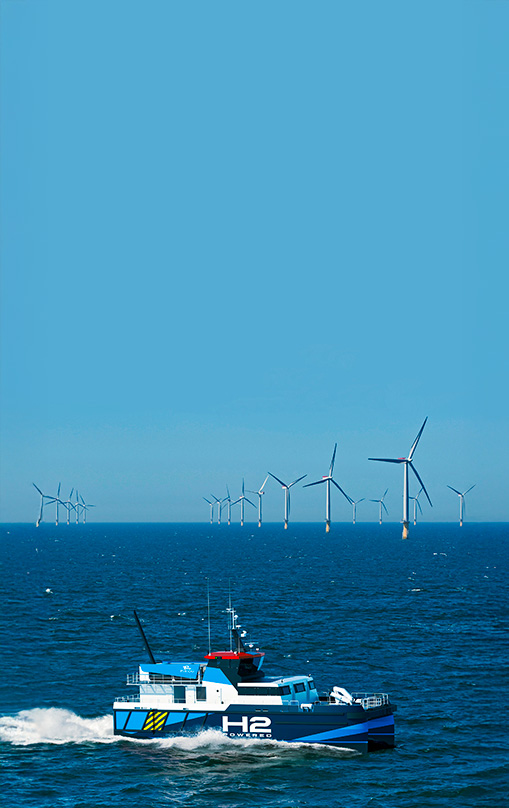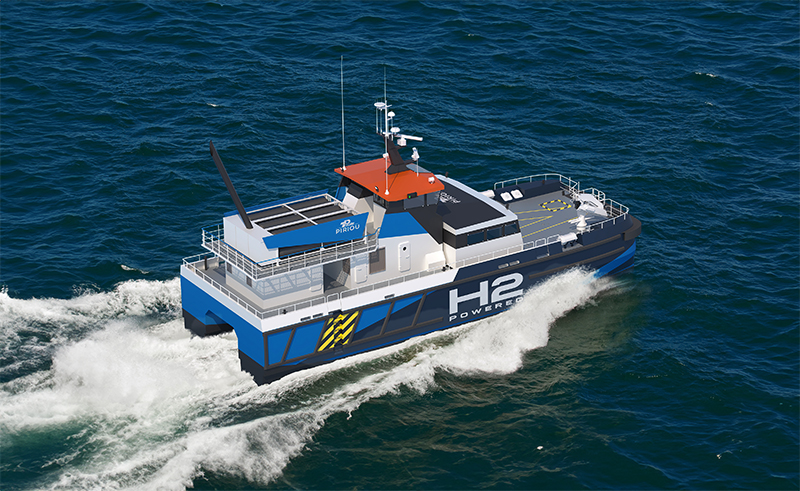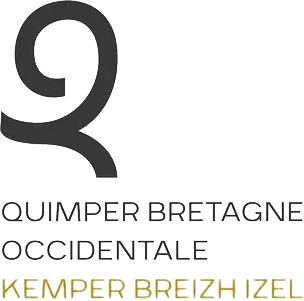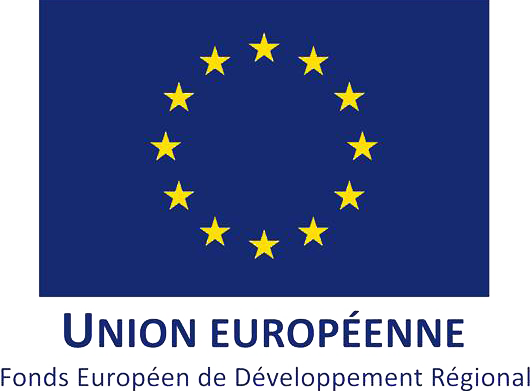ZEPH₂: CTV diesel-hydrogen hybrid
Green hydrogen is one of the most virtuous energy vectors: the use of hydrogen, which is a decarbonized molecule, produces only water. However, the difficulty of storing hydrogen means it can hardly be deployed on large and long-range vessels.
Nevertheless, operational profiles of small and short-range vessels such as passenger shuttles lends itself very well to the use of hydrogen in its pure, gaseous form. Zéphyr & Borée took part in the development of a hybrid Crew Transfer Vessel (CTV) aiming at offering offshore wind energy players a vessel capable handling their transfer operations with a decarbonization level up to 60%.
The development of this vessel was carried out by the consortium ZEPH₂ regrouping Zéphyr & Borée, Piriou Engineering, Entech Smart Energies, Sofresid Engineering and Compositic (Université Bretagne Sud).
Each of these companies brings a specific expertise that is contributing to the hybrid CTV project achievement.
The project was subsidized by the Brittany Region, Lorient Agglomération, Quimper Bretagne Occidentale and the FEDER fund.


The hybrid diesel/hydrogen propulsion is particularly well suited to CTV, whose operational profile can be split in three main phases:
Low-consumption phases like channelling and stand-by at mid-day.
Transit between port and wind farm.
Operators transfer from ship to wind turbines.
The hybridization was developed to enhance fuel cells load stability through the power demand variations. During low-power phases, fuel cells provide enough power to manoeuvre the vessel in zero-emission mode. During transit and transfer phases, peaks in power demand are supported by diesel engines complementing the initial fuel cells power.
This configuration guarantees an optimal use of fuel cells as well as the utilization of all on-board decarbonization capacities.
This type of hybridization improves the propulsion efficiency through every vessel operation phase, while significantly reducing the environmental impact.
In figures:
Overall length: 28.10 m
Moulded breadth: 9.20 m
Overall beam: 10.00 m
Draught (hull): 1.50 m
Max speed: 20 knots
Passenger lounge: 24







